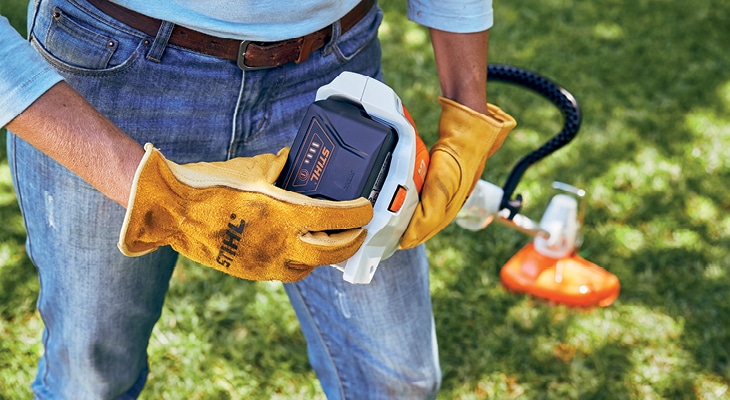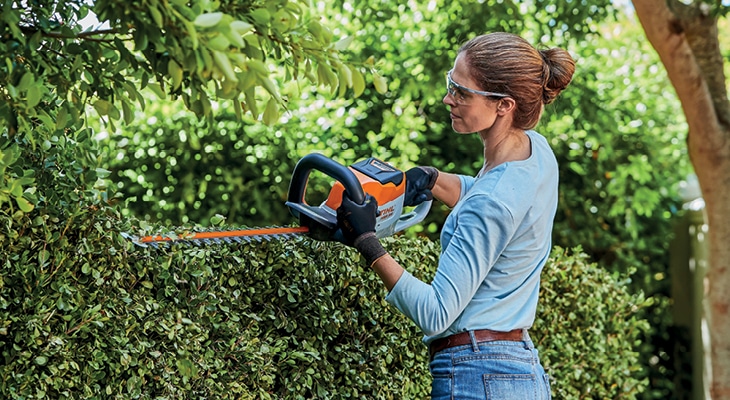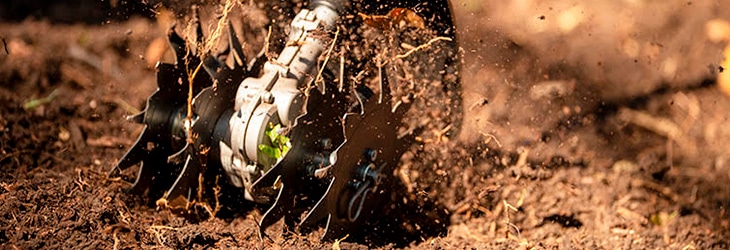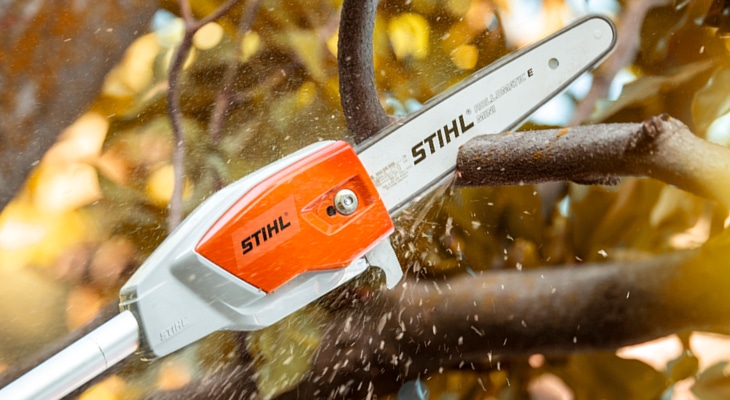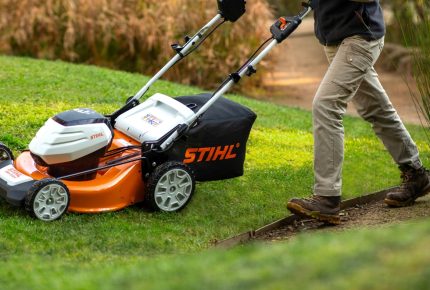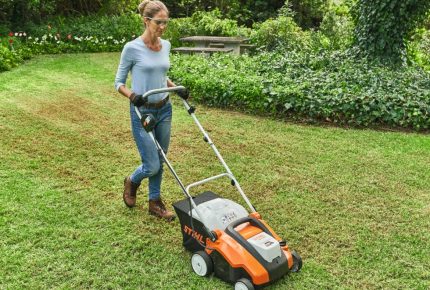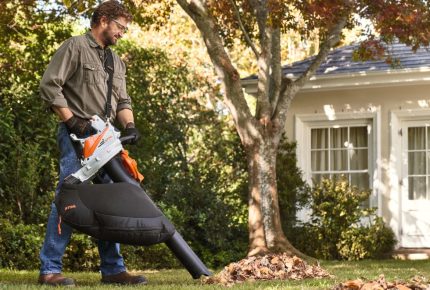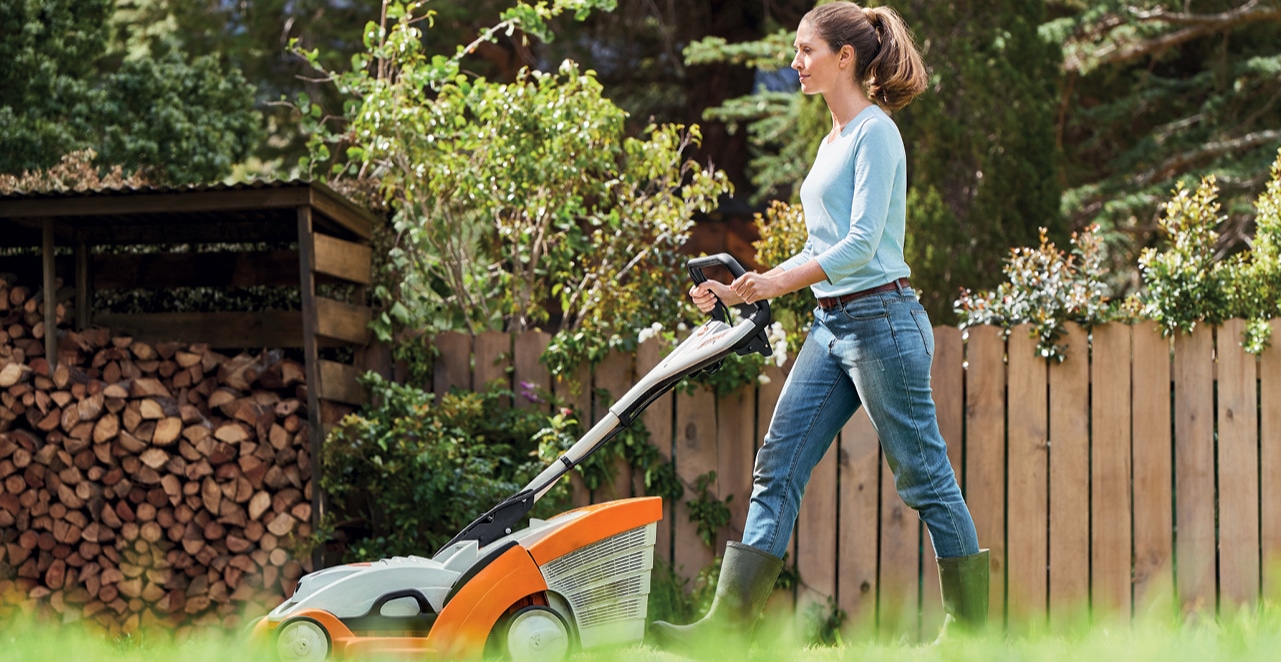
#Inspiration
Spring Gardening Guide
Your garden may look a little tired and dull after Winter has taken its toll, so a quick garden makeover is well timed as the weather starts to get warmer and Spring kicks in. Here are our top tips of what to do to get the most out of your garden this Spring.
BRING YOUR LAWN BACK TO LIFE
The grass or lawn area in your garden is a major feature of the yard, and one of the most widely used and functional areas. Your lawn’s growth will slow down considerably through winter, and it will look pretty lacklustre as we head into Spring.
Start by grabbing your grass trimmer and running it across the top of the lawn to trim back any unruly growth and define your edges before you mow. A grass trimmer is especially handy to cut long grass under shrubs and plants that have come out over the lawn, as well as trim back growth around letterboxes, fences, decks or play equipment.
Once done, give your lawn its first cut after Winter to remove the old growth and encourage a fresh new lawn to flourish. Set your lawn mower to a medium to low setting and run the mower over the lawn. This will reduce the length of the grass blade, and work together with the aerating to get water and airflow to the roots.
Once the lawn has been cut and edged, the next step is to improve its health. An important process in the rejuvenation of your grass is the dethatching. The ‘thatch’ of your lawn is a layer of organic matter made up of lawn clippings, plant matter and roots that accumulates just on top of the root system. If this builds up too much and becomes thick, it will remain wet and be detrimental to the health of your lawn. Every 4 months or so, use the STIHL MultiSystem with the dethatcher attachment to remove the thatch, and finish by running the lawn mower over the grass again to collect it up.
Aerating of the soil is also important, and involves putting holes through the lawn and soil to allow fertiliser, water and top-dress soil to get down into the roots. The STIHL MultiSystem is a great tool that helps get yard work done quickly without the use and effort of handheld tools.
SPRING HEDGES TO ENVY!
Hedges are a part of the garden that will need attention once the Spring growth spurt has hit. Hedges add such beautiful structure to the garden, either defining an edge, lining a pathway or driveway, creating privacy from a neighbour or road, or dividing your yard into separate rooms.
The advantage of regular hedge trimming is that you will end up with a nice dense hedge. Trimming off the tips (or ‘tip pruning’) allows more light and airflow deep down into the hedge, and encourages new lush growth the whole way through the hedge.
Keeping hedges neat also gives your whole garden a well-maintained feel. After winter, the initial hedge trim will remove the old winter growth, and take the hedge back to the soft-tipped foliage. The size and type of hedges in your garden will dictate the hedge trimmer that is right for you.
If your hedge has become a bit unruly or out of shape, you can cut most of your hedges back into the wood (this means removing the soft foliage). The initial hard prune may make the hedge look a bit ‘woody’ or open, but don’t worry, as the fresh growth comes back within a few weeks your hedges will fill out again in no time.
Shaped topiary balls and cones also add structure and can act as decorative features to your garden. As well as the regular trimming, to keep topiaries looking full, spin the pot 90 degrees every few months. This allows all parts of the plant to get an even amount of sunlight.
GET PLANTING
As the weather warms up, so does your soil, making Spring a great time to get planting. The plants and trees in your garden absorb moisture and nutrients through their root system, making your soil one of the most important aspects of your plant’s health. It needs to be aerated and loose, so that oxygen and water can easily be accessed by the plant’s root system.
The first step is to assess the garden bed you are working on and work out which shrubs are to stay and which ones will be removed. Some plants are happy to be relocated, whereas others prefer to stay put. For the plants that you want to move, grab a sharp spade to dig out a good root-ball. Most plants will benefit from a cut back before moving them, reducing the foliage by around 25%. Use a hedge trimmer or pair of shears to do this properly and make sure you give the plant a deep watering the day before you are going to transplant it. This will help the soil and root-ball stick together when you are transplanting it.
Once the area has been cleared, the soil needs to be turned ready for enrichment with compost. This can be done with some good old-fashioned hard work using spades and garden forks, or you can use the STIHL MultiSystem or KombiSystem with the cultivator attachments. Any organic matter is great for enriching the soil, including matter from your compost bin, manures, worm juice, or bagged products from your local nursery. Once the manure, composts and organic matter has been spread over the garden bed, it all needs to be mixed together. Using the STIHL MultiSystem with the bolo tines attachment, run over the garden bed two to three times to a depth of approximately 10-20cm.
Once you have finished with the mixing, your soil is ready for planting. A layer of mulch is recommended for protect new plants, especially in a garden that has been aerated and enriched. Spread a thick layer over the gardens before giving the whole area a big drink.
TREE CARE
Trees add shape and height to any garden and can make a statement, as well as provide shade through the warmer months and provide the space with a sense of establishment and history. Keeping your trees healthy and in proportion is a big part of the look of your yard and an annual tidy will them under control and maintainable.
The first thing to do is remove any dead wood or dead branches using a pole pruner. The main canopy of the tree should also be trimmed at this time. Remove any branches that are growing towards power-lines, or your house, as well as keeping branches away from your neighbour’s property. The height of the tree can also be reduced using a pole pruner as this will promote healthy dense growth and keep the tree to a manageable size.
Under-pruning the tree is also an important part of tree maintenance and involves taking off the lower branches and exposing the trunk. Exposing the trunk also gives the tree a lovely natural form, with a clear definition between the trunk and canopy. If you are looking to plant out the garden beds underneath the tree, you need ample light and airflow. Use the loppers or a chainsaw to remove these branches and open up the garden beds below.
Deciduous trees will need a trim after the cooler months, with species like Crepe Myrtle (lagerstroemia indica) benefiting from a prune after their flowers have finished. Use the pole pruner to cut the dead flower heads off and to encourage new foliage and flower growth for the following year.
It is never too early to get stuck back into the garden after a long, cold winter, and the sooner you do it, the more time you’ll have to enjoy it.
For more tips to get the most out of your garden this Spring, visit your local STIHL Dealer.

